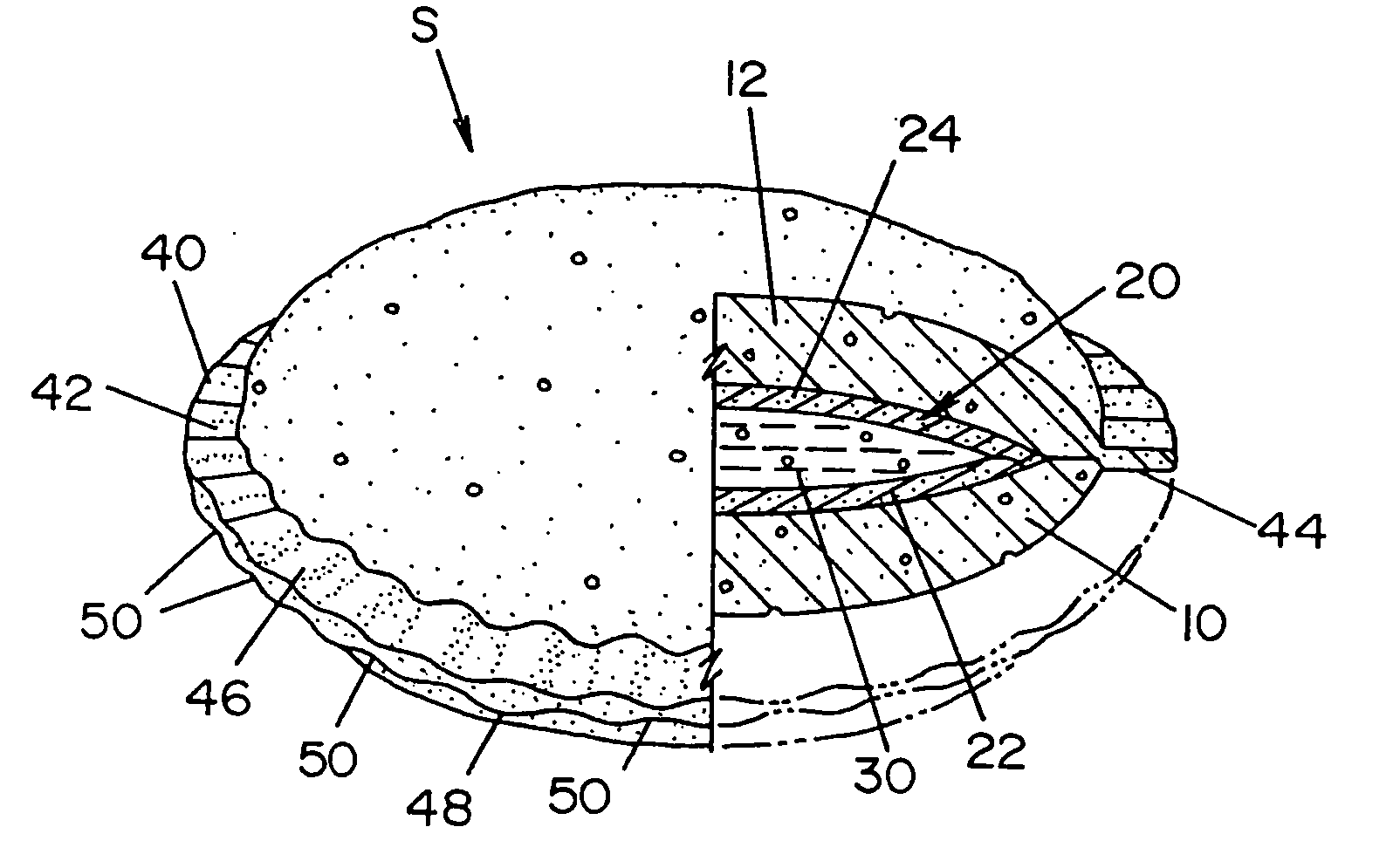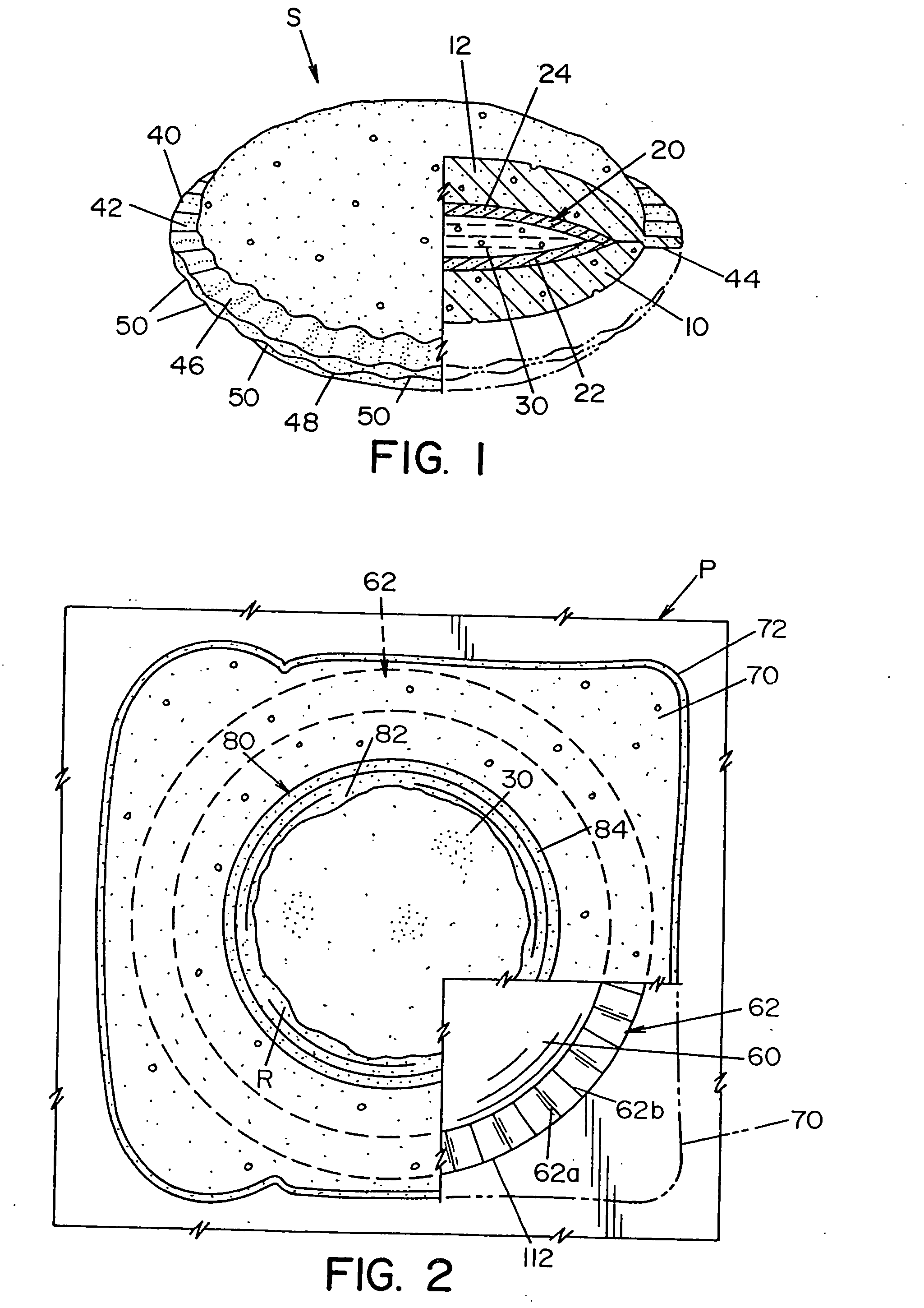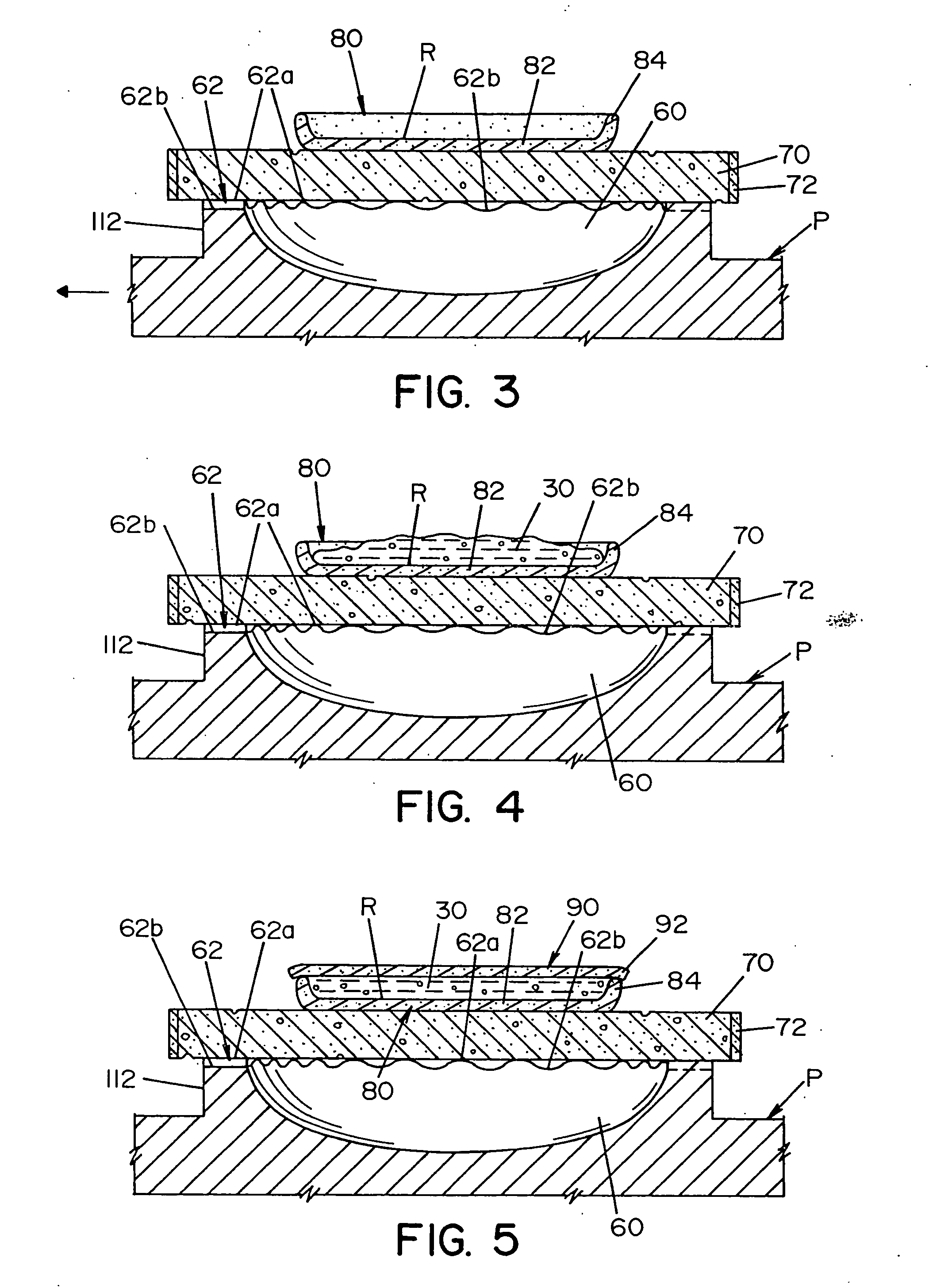Method and apparatus for making commercial crustless sandwiches and the crustless sandwich made thereby
a commercial crust and sandwich technology, applied in the field of commercial crustless sandwich and the commercial crustless sandwich made thereby, can solve the problems of limited jelly amount, adversely affecting certain portions of the crimped periphery, and not necessarily giving the optimum proportion, so as to achieve the effect of high quality
- Summary
- Abstract
- Description
- Claims
- Application Information
AI Technical Summary
Benefits of technology
Problems solved by technology
Method used
Image
Examples
Embodiment Construction
[0031] Referring now to the drawings wherein the showings are for the purpose of illustrating the preferred embodiment only and not for the purpose of limiting same, FIG. 1 shows a crustless sandwich S manufactured by the method and apparatus of the invention and constituting an aspect of the invention. This sandwich has a first piece 10 of bread cut from a crusted slice and a second piece 12 of bread cut from a second crusted slice. These bread slices are freshly baked and are white bread made from batter known in the art for providing a sealing action when pressed together at an elevational pressure. As illustrated, the sandwich is circular; however, in accordance with the invention it can be rectangular, triangular, oblong or other shapes without departing from the concept of the invention. Sandwich S includes a central composite food layer 20 interior of the flat crimped marginal areas and formed from a first deposit 22 of the first food spread which, in practice, is peanut butt...
PUM
 Login to View More
Login to View More Abstract
Description
Claims
Application Information
 Login to View More
Login to View More - R&D
- Intellectual Property
- Life Sciences
- Materials
- Tech Scout
- Unparalleled Data Quality
- Higher Quality Content
- 60% Fewer Hallucinations
Browse by: Latest US Patents, China's latest patents, Technical Efficacy Thesaurus, Application Domain, Technology Topic, Popular Technical Reports.
© 2025 PatSnap. All rights reserved.Legal|Privacy policy|Modern Slavery Act Transparency Statement|Sitemap|About US| Contact US: help@patsnap.com



